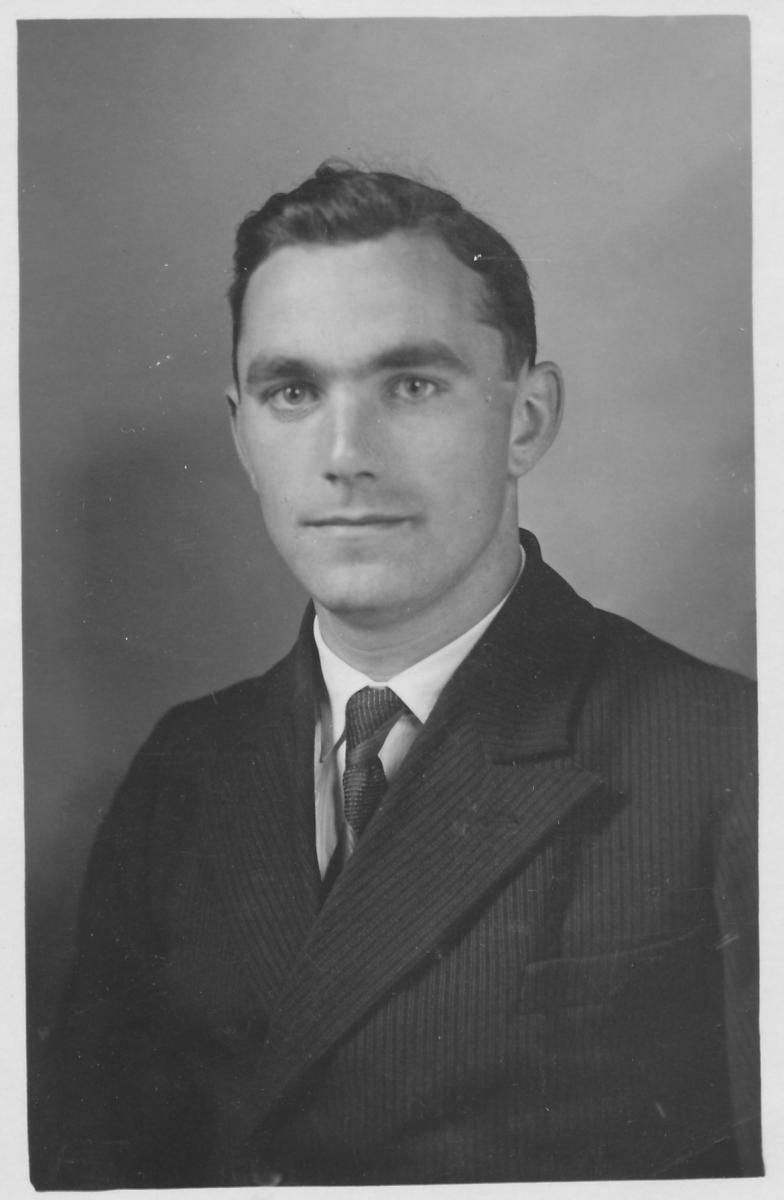Hermann Scheipers
Mediathek Sorted


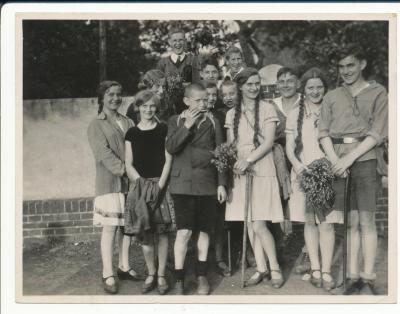

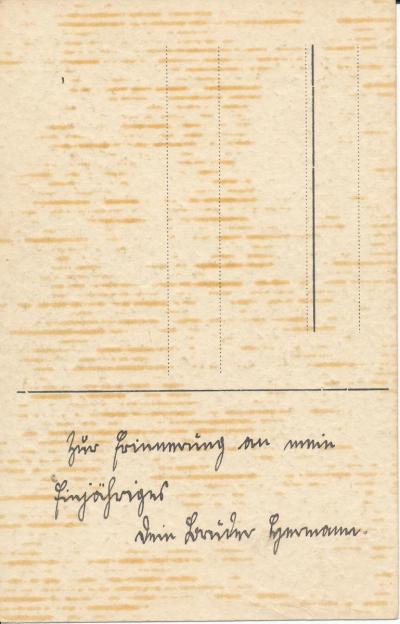

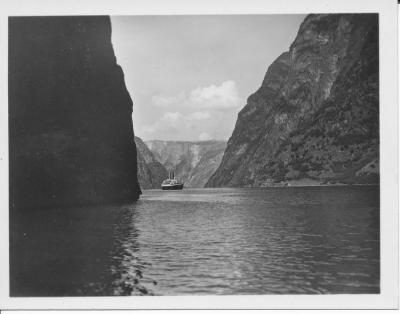

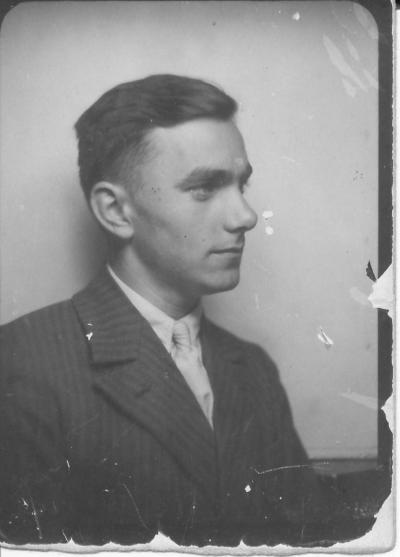
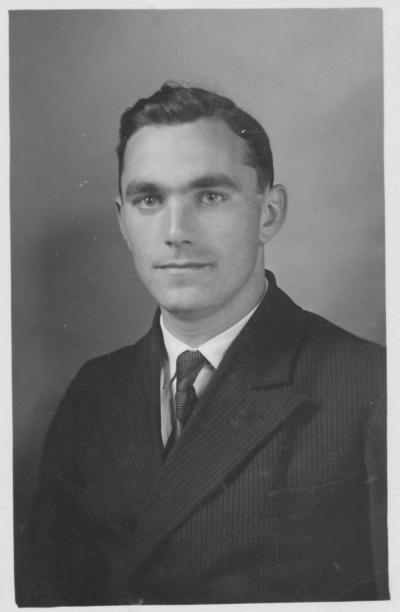



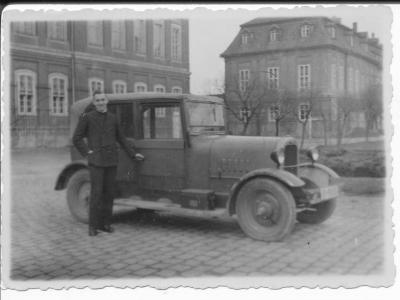
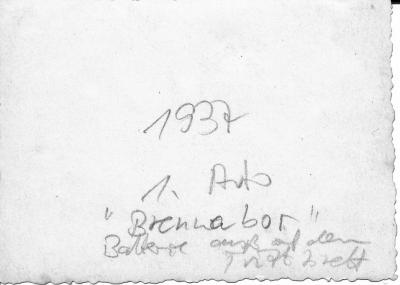
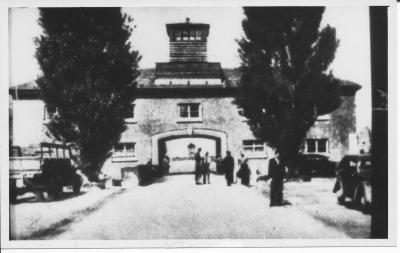









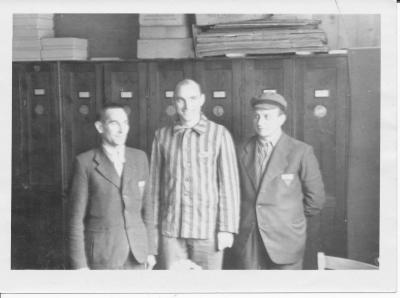

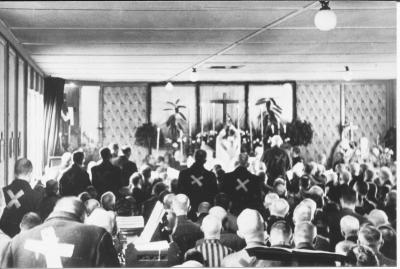
![The rear side of the photo of the church service for priests in the Dachau concentration camp The rear side of the photo of the church service for priests in the Dachau concentration camp - With a handwritten remark by Scheipers: "Church service of the concentration camp priests in Dachau (Most of the prisoners are already wearing suits that have been cut up and sewn over with the X, because by 1944 there were no more prisoner clothes [...]"](/sites/default/files/styles/width_100_tiles/public/assets/images/013b_-_rueckseite.jpg?itok=Il_qnB9A)


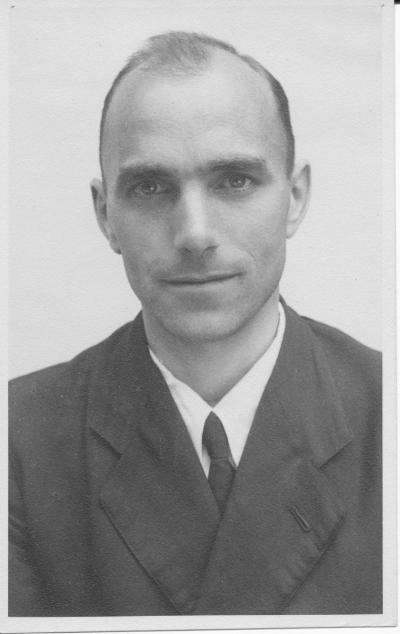
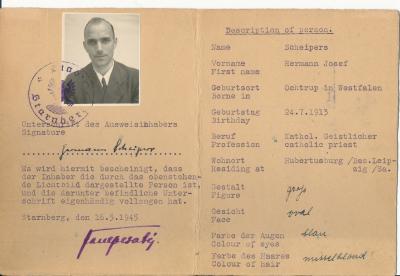
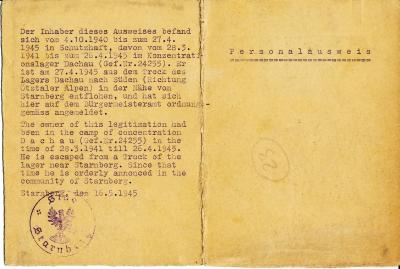
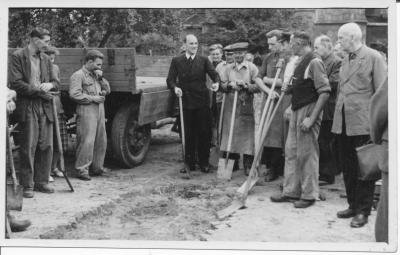
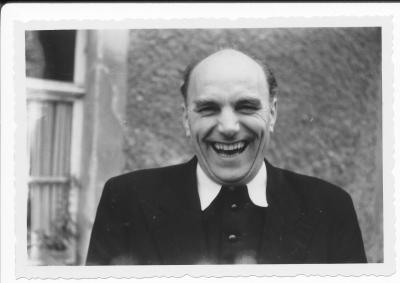

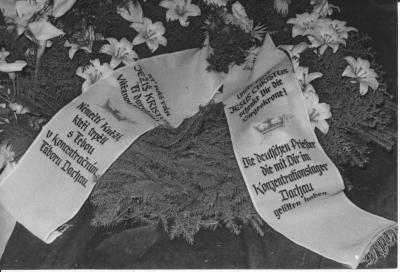





Dir gehört mein Leben (DE)

I owe you my life (EN)

Moje życie należy do ciebie (PL)
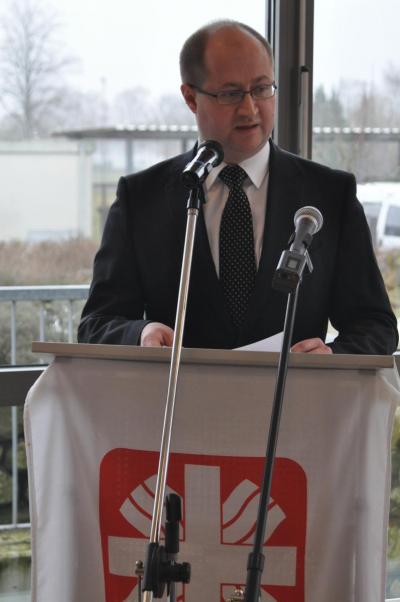
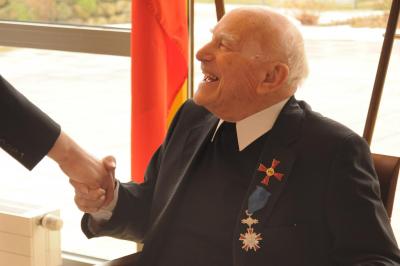
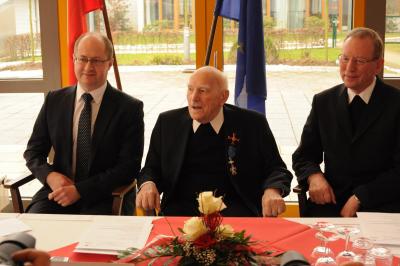
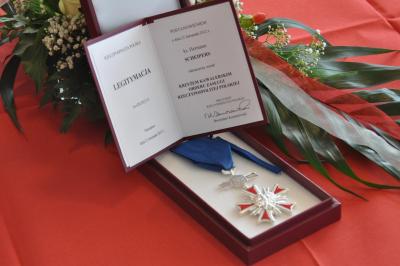
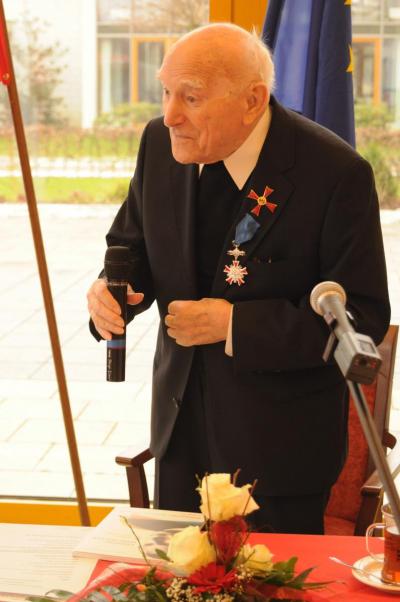

Conversation with Jacek Barski
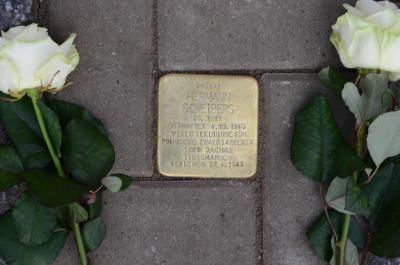
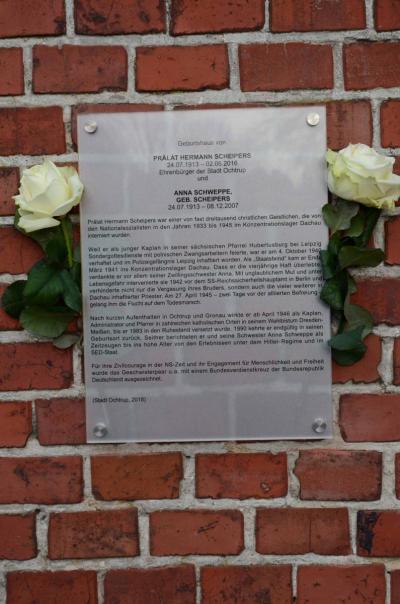






























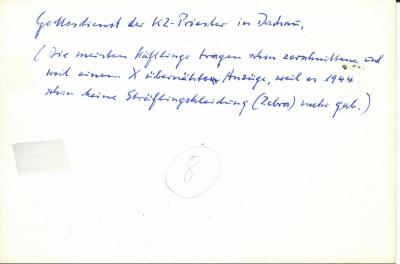



























All in all, 2,720 priests were imprisoned in the Dachau concentration camp, of whom 1,034 of them died there. The situation of Polish priests was particularly difficult in the camp; Scheipers remembers that they were subject to especially cruel treatment at the hands of Communist-orientated Kapos. When they were isolated and banned from taking part in daily church services Scheipers smuggled wine and altar bread for them.
Later the Oscar-winner Volker Schlöndorff was to consult Hermann Scheipers whilst he was shooting his film “The Ninth Day” (2004), a film dealing with the fate of the clergy in Dachau, based on the autobiographical novel by Father Jean Bernard entitled “Priestblock 25487”.
Hermann Scheipers was saved from the gas chamber by his twin sister on 13th August 1942. After a secret meeting with her brother in Dachau she made a private visit to the civil servants in the Central Reich Security Office in Berlin who were responsible for the imprisoned priests. Following a dramatic conversation she received a promise from the civil servants that her brother would not be gassed. This promise also applied to all the other priests. Indeed, from that moment on, no priests were sent to the gas chamber. Thus Anna Scheipers not only saved her brother’s life but those of more than 500 other priests.
In Dachau Scheipers constantly witnessed the cruel treatment and deadly human experiments on the prisoners. Many of them were immersed in cold water to test the limits of hypothermia. The experiments were needed in order to develop special clothing for the Armed Forces. According to Scheipers: “All of them died when their body temperature sank to 27°. Only one Russian held out to 17°”. Nonetheless Scheipers’ faith and reinforced inner conviction prevented his feelings from being deadened. Indeed the opposite was true. He remained constantly full of hope and gave aid to his co-prisoners, in particular the Polish priests, wherever he could. He also began to take an interest in the Russian language.
As the Allies approached, the Dachau concentration camp was evacuated in April 1945 and death marches began for the prisoners. On 27th April 1945 Scheipers fled from the death march and hid in a priest’s house in Starnberg. At the end of the war the American occupying authorities in the town of Starnberg issued him with an identity card as early as 16th May 1945. He still regards this card as a “relic”.
After his return to Ochtrup he remained there for a year before taking over the post of chaplain for the bishopric of Meißen in Radebeul, and later in Pirna, Wilsdruff and Schirigswalde Scheipers then found himself in the midst of a second German dictatorship in the form of the German Democratic Republic (GDR). Despite harassment he refused to leave his posts, and was even responsible for building the first church in the GDR, the parish church in Wilsdruff.
In 1974 Cardinal Stephan Trochta, who befriended Scheipers whilst they were both interned in Dachau, died in Czechoslovakia. Trochta, who had also suffered under two dictatorships (including seven years in prison in Czechoslovakia, was made Bishop of Litoměříce / Leitmeritz in 1948. His funeral was transformed into a political demonstration when it was attended by over 3000 mourners, including cardinals and bishops from all over Eastern Europe. The State Security Service had forbidden anyone from delivering a funeral oration. Despite this Scheipers gave a spontaneous speech in German in which he said: “Dear brother and comrade in the Dachau concentration camp! From the days of your youth you served our Lord Jesus Christ and followed him with courage and faith on his way to the cross. You fought tirelessly for the freedom to believe and for the church without fearing your enemies’ threats. And for this you were forced to endure imprisonment and heavy tribulations. May the Lord now give you his peace and the crown of eternal life.” In addition Scheipers organised a wreath in the name of the prisoners in Dachau. The ribbon contained the following inscription in German and Czech: “May our Lord Jesus Christ give you the crown of victory. The German priests who suffered with you in the Dachau concentration camp”. The wreath was placed in a prominent position right at the front of the casket. Another silent witness at the funeral ceremony was the Archbishop of Kraków, Cardinal Karol Wojtyla, who was to become Pope Paul II four years later, and with whose support the communist system in Eastern Europe began to collapse for good.
Hermann Scheipers returned to the Federal Republic of Germany in August 1983 after his retirement, and came back to live in Ochtrup in 1990. Here he and his twin sister Anna were presented with the Cross of the Order of Merit of the Federal Republic of Germany on 25th November 2002. On 26th February 2013 Hermann Scheipers was awarded the Knights Cross of the Order of Merit from the Republic of Poland. Hermann Scheipers is an honorary citizen of the towns of Ochtrup, Wilsdruff and Williamsport (USA).
Hermann Scheipers died on 2nd June 2016 in Ochtrup.
After the CDU Council faction had taken an initiative to ensure that Hermann Scheipers was appointed honorary citizen in Ochtrup, it applied in August 2016 after his death as a further contribution to the history policy and culture of remembrance a "Stolperstein" (stumbling block) for Hermann Scheipers to relocate - an international project of the Cologne artist Gunter Demnig, which keeps the memory alive of all persecuted in National Socialism. On the 3rd February 2018 the stumbling block with the life data of Hermann Scheipers was put on a square brass plate in front of the former parental apartment in the pavement of the sidewalk by the artist, who had traveled to Ochtrup from Cologne. A commemorative plaque reminds at eye level of the special moral courage of the twins Anne and Hermann Scheipers.
Jacek Barski, June 2015





















































































